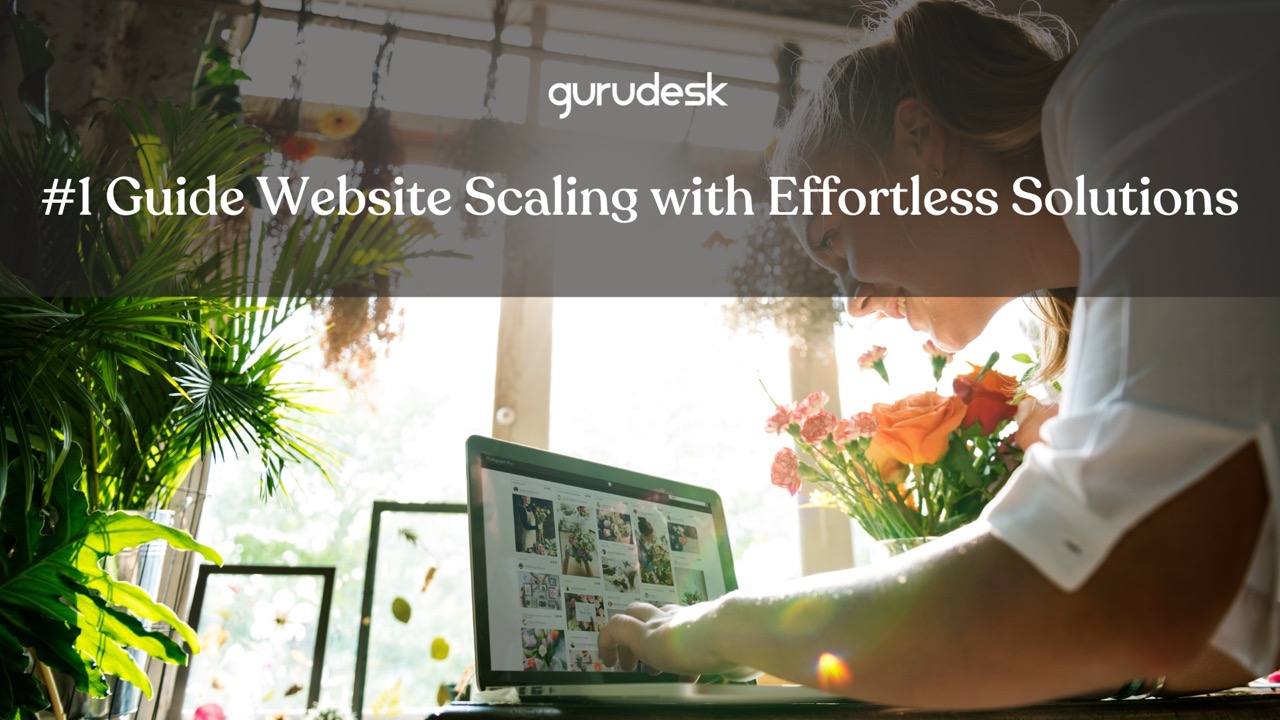
Website scaling, especially when your business and user base grow, is no longer a feature but a necessity.
Scaling your website means having a well-performing platform at launch that is capable of adapting to increased traffic, content, and user demands without compensating for performance.
What is Scalability?
Scalability is the ability of a system, network, or process to handle an increasing amount of work or data.
Website Scaling
Focuses on delivering static content efficiently.
Websites primarily present information through pages with text, images, and videos.
Scaling prioritizes these resources quickly and efficiently for many recurring users.
Website scaling often relies on the following:
- Content Delivery Networks (CNDs): Distribution of static content geographically closer to users for faster loading times.
- Caching: Accessing content in memory for quicker retrieval.
- Load Balancing: Distribution of user traffic across multiple servers to void overloading any single server.
- Optimizing Server Infrastructure: Choosing the right server configuration and software for efficient content delivery.
App Scaling
App scaling tends to handle complex user interactions and dynamic data.
Apps often involve user interactions, data processing, and real-time updates.
Scaling needs to be able to accommodate dynamic functionalities alongside user growth.
App scaling uses diverse techniques, including:
- Horizontal Scaling: This adds more servers to distribute the workload of processing user requests and database queries.
- Microservices Architecture: Breaking down the app into smaller, independent services that can be scaled individually.
- Database Scaling: Optimizing the database to handle increased read/write operations effectively.
- Caching Application Logic: Utilize caching mechanisms to store frequently used calculations or data for faster retrieval.

How to Tailor Your Website Scaling Plan
For effortless website growth, it is necessary to tailor a plan that highlights your business goals.
In order to begin, start by defining your requirements.
- Audience: Knowing your audience is the first step to scalability.
- Are they tech-savvy or are they from various demographics?
This further helps you shape your design, functionality, and scalability needs.
- Estimating Demand: Estimating future demand is a critical aspect. Whether during seasonal spikes or steady growth, your website should keep pace with user traffic without a hitch.
- Technology Stack: Determining the technology stack influences its ability to scale. From your server’s operating system to its database, each element is chosen with future growth in mind.
What Do You Need for a Scalable Website?
Your website should include a fast, reliable server, a database handling vast and growing data sets, and a framework for quick and easy updates.
- Architecture: There are two options when it comes to web architecture: monolithic and microservices.
- Monolithic: All functionalities within a single unit.
- Microservices: Collection of small, independent services.
- Third-Party Services: Cloud hosting providers, payment gateways, or enterprise CMS, offer specialized functionalities that can effortlessly scale with your needs. By integrating these services, you offload some of the heavy lifting and can focus on scaling other areas of your website.
The Importance of User Experience to Scale Your Website
Load balancing prevents any performance dips. It gracefully manages thousands of users, each receiving a seamless user experience.
Website performance optimization is necessary, especially when customers expect prompt service, regardless of how crowded it can get.
Your website must be optimized to handle these requests swiftly, providing a smooth experience that keeps users coming back.
This means optimizing loading times, server loads, and ensuring your infrastructure can handle peak traffic with ease.
- Optimizing Load Time: According to Hubspot, 40% of users abandon a website that takes more than 3 seconds to load. Even a one-second delta decreases customer satisfaction by 16%.
- Server Load Time: Server optimization is crucial and involves efficient code, robust hosting solutions, and effective load balancing, as mentioned above.

How to Build a Scalable Website
How do you craft a website that stands still and is resilient in the face of growing user numbers and content?
1. Selecting a Website Host
Hosting providers are the foundation on which your website stands. Choose a hosting provider that offers space and scalability options as your traffic increases.
2. Website Design
A well-designed website is about both aesthetics as well as performance. A cluttered website design may slow your website down, affecting its scalability.
3. Caching
Caching helps store parts of your website to readily access without overloading your server.
4. Speedy Database
Your database should be quick to retrieve and store information. This speed becomes crucial as the traffic on your website grows.
5. Regular Updates
Your website needs maintenance. Regular updates make sure that your website is always efficient and secure, ready to scale when necessary.
6. CDN
CDN makes sure your content is closer to your users, which reduces loading times and server stress.
7. Load Balancer
The load balancer is important to make sure that no server gets overwhelmed, therefore maintaining your website’s performance and uptime.
What Are The Advantages of Scalable Websites?
Website Scaling is a tool that helps your business grow without any hiccups along the way.
The advantages are as follows:
- Anticipates growth, technological advancements, and user behavioral changes.
- Enhanced UX leading to customer retention.
- Cost Efficiency (Long-term savings investment)
- Flexible and easy to adapt to market fluctuations
- Strengthens trust in the brand and guarantees availability of services
- Competitive edge

Scale Your Website With GuruDesk
A scalable website is mandatory when thinking of starting your online business. Not only that, but maintaining a successful, seamless user experience, cost-efficient and competitive edge in the market.
GuruDesk takes into consideration the necessity of maintaining an online presence, which is why we offer scalability options within our plans.
Not to mention the importance of offering you an optimized hosting server, ready to take on the challenges of your traffic.
Join the GuruDesk community and be among the first ones to discover the hottest trends in web services! We are a team of web experts and we love sharing our knowledge and experience with our readers! We share tips and tricks on a wide range of topics, including web development, cloud services, and hosting. Whether you are a seasoned pro or just starting out, we promise you will find valuable information here. So go ahead, hit that “Subscribe” button and let the fun begin!






